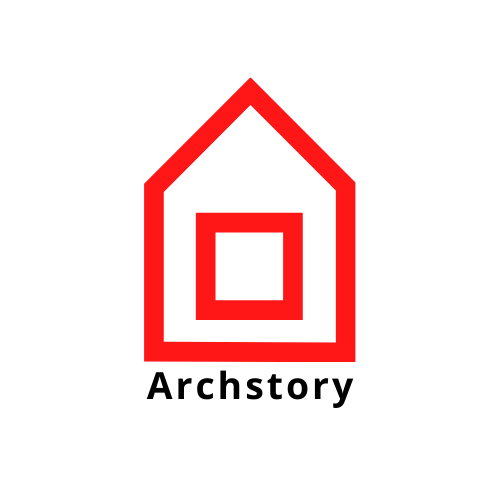
Orange Architects-Jonas’ Residential Building
이 주택은 암스테르담에 위치 하고 있다. 190개의 임대주택과 83개의 분양 주택 및 다양한 지원 시설을 수용한다. 혁신적인 주택 개념과 최고의 지속 가능성 인증을 받은 멋진 공간 인테리어를 갖춘 건물이다. 조나스라는 이름은 조나스와 고래의 이야기에서 따온 것이다. 그것은 모험과 친밀함을 의미하지만 '큰 몸' 내부의 보호, 안식처 및 편안함을 의미하기도 한다. 불규칙한 개구부가 있는 건물은 창문이 파사드를 가로질러 부드럽게 물결치는 듯한 인상을 준다. 그것은 이 주거용 건물을 조금 다르게 만든다. 그것은 돌로 덮여 있지 않고 어둡고 미리 도금 처리된 아연으로 마감되어 있다. 파사드는 지면에 닿지 않고 들어 올려진다. 볼륨은 직사각형이 아니라 다이아몬드 모양이다. 그것은 친숙하면서도 소외되고, 조각적이지만 합리적이며, 알아볼 수 있지만 혁신적이다.
공간 개념은 전통적인 목조 선박이 건조되는 방식, 즉 주요 구조를 형성하는 일렬로 배열된 일련의 트러스로 구성된 골격을 기반으로 한다. 이를 통해 볼륨에서 큰 구멍을 뚫을 수 있으며 필요한 주택 프로그램인 총 273개의 아파트가 건물의 '외피' 내에 포함된다.
Jonas is located at the harbor of Amsterdam IJburg and accommodates 190 medium-priced rental homes, 83 owner-occupied homes, and a range of supporting facilities. It’s a building with an innovative housing concept and spectacular spatial interior that received the highest possible sustainability certificate: BREEAM Outstanding. Jonas will enhance social cohesion, in what is still a new district, by creating a sustainable, inviting heart for the neighborhood. Orange Architects designed Jonas, with a mixed-use program, for Amvest in collaboration with ABT, Felixx Landscape Architects, Site Urban Development, and city maker Floor Ziegler. Ballast Nedam West was in charge of construction.
The name Jonas refers to the story of ‘Jonas and the Whale’. It stands for adventure and intimacy, but also for protection, shelter, and comfort inside a ‘big body’. It is a heroic building with a warm heart. But Jonas is also a sustainable and attractive building that stands out from the surrounding buildings in IJburg – if only because of the special site on the headland and the special program it accommodates. The building expresses in a striking manner themes that belong to this location: water, quayside, and the craft of shipbuilding. As a result, Jonas feels natural, because the building embraces the ‘soul of the place’ and renders it visible.
The building with its irregular openings creates the impression that the windows are gently undulating across the facade. That makes Jonas a bit different. It is not covered in stone but faced in dark, pre-patinated zinc. The facade does not touch the ground but is lifted off it. The volume is not rectangular but diamond-shaped. That makes it both familiar and alienating, sculptural yet rational, recognizable yet innovative.
But the real surprise of Jonas awaits inside. This is welcoming, warm, and spectacular. It expresses a modern and sustainable community life. The interior is unexpected and surrealistic. The spatial concept is based on the way traditional wooden ships are constructed: a skeleton consisting of a series of trusses arranged in a row, which form the main structure. This allows large hollows to be carved out of the volume, and the required housing program, a total of 273 apartments, is contained within the ‘skin’ of the building.
The landscape is not limited to the surroundings of the building but also penetrates deep into Jonas. A communal route, shaped as a canyon, extends through the building, linking together the public and collective program, including the living room, the cinema, the mountain path, the forest patio, and the rooftop beach and bar. The commercial facilities in the plinth, all supporting the concept and bigger picture of Jonas, provide extra dynamism on the ground floor and the quay. This part of the program is also accessible to the public. The residential concept of Jonas is supported by a community manager, who’s close to the residents and is to be consulted for matters like booking the guestrooms, the yoga studio, or a shared car. He is also responsible for organizing various activities together with residents and locals.
Jonas has a strong focus on communal living, with inclusiveness as one of the main goals. 70% of the 273 homes fall within the mid-rental category, making living in Jonas accessible to various target groups.
Besides the attention to social sustainability, Jonas is brimming with technically sustainable elements. The zero-energy building boasts a large number of solar panels on the roof. Sustainable energy is used for, among others, mechanical installations, and lighting systems. Moreover, a low-temperature heating system connects to the public heating grid. The cold storage source uses the nearby water: Thermal Energy from Surface Water (TEO). As a result, the homes can be both heated and cooled.
In addition to providing a future-proof energy supply, the design aims to reduce the use of materials and reuse raw materials. The environmental impact of materials was an important selection criterion, and the use of various raw materials was considered on multiple occasions during the process. The shadow price and carbon footprint of construction materials were constantly monitored and optimized. For example, the concrete is CSC certified, and at least a quarter of the granulate consists of recycled material, taken from construction waste for example. European Douglas wood is used both inside and outside.
Photography by Sebastian van Damme











from archdaily
'House' 카테고리의 다른 글
| -에덴 하우스 [ TATÚ Arquitectura ] Edén House (0) | 2023.06.03 |
|---|---|
| -그릇형태의 모양을 한 주택 [ NKS Architects ] Sky Vessel House (1) | 2023.05.15 |
| -내부로 확장된 기숙사 [ Atelier FCJZ + CAAU ] Maison de la Chine Dorms (0) | 2023.05.09 |
| -알루미늄 골강판을 외피로 활용한 주택 [ Antarctica ] Windsor Castle (0) | 2023.05.03 |
| -톱니 모양의 주택 [ LAMAS Architecture ] Virgin Vineyard House (0) | 2023.05.01 |
